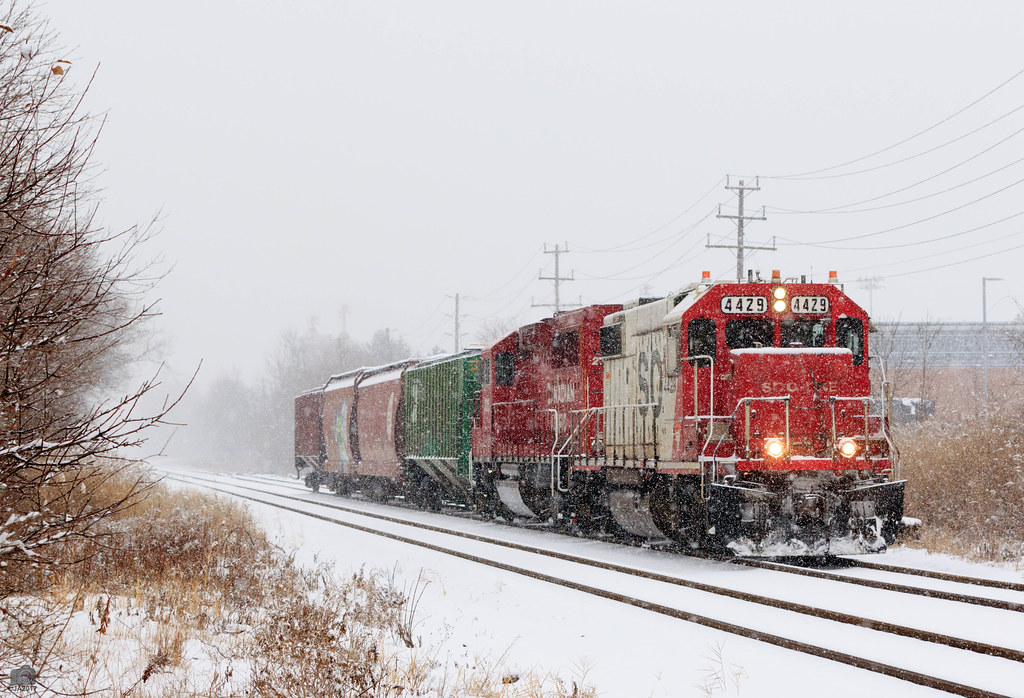Planning and research
Okay, so our basement is big. The open basement space is 16
x 40, that doesn’t include the laundry room. But that doesn’t mean I’m allowed
to fill every bit of this basement in some desperate attempt to create a
true-to-scale version of the Canadian Pacific Railway. We need the space to
store stuff, there’s a boiler and a water heater and I like to keep enough of
the basement open that if I want to set up a pair of sawhorses to work on
aother project, I can do it. Plus I don’t want a monster layout anyway.
The space I have available is the southwest corner of the
basement. (The south wall is the front of the house). The ceilings are 7 feet
high, the walls are brick, the floor is concrete but it’s also dry, even during
the spring melt. Along the east wall is a 2’x10’ workbench with tool storage
underneath and a cabinet of other tools above. The layout will be in the square
opposite the bench in a space that’s about 12’x10’. Now that’s really not a lot
of space for a modeler in HO, but we all have to work within constraints and
these are mine.
(I will add a diagram of the space, at some point)
The layout I’m trying to achieve
My aim is to create a switching-heavy urban layout that
mimics, as close as possible, the freight operations in a small yard with
sidings that serve a few light industrial clients. Continuous run would be nice
but isn’t essential. While it’s fun to open the throttle, put your feet up and
watch the trains roll around, I don’t mind going point to point because that’s
more true to how a real railroad operates. Plus my space constraints (see
above) make any loop-style layout seem too close to the 4x8 I left all those
years ago.
So here’s my wish list
- A small (lets say four-track) yard with capacity for some light switching.
- At least one runaround track so the engine can get around its train.
- A few spurs that serve industries. At least bit of mainline allowing me to open up the throttle, even if just for a bit, to make it feel like this freight is moving somewhere instead of just shifting back and forth a few feet at a time.
I’m not keen on duck-under designs. This Heart of Georgia
layout plan:
is pretty close to what I want but I want a bit more
track, a bit less scenery and I’d like to avoid the duckunder, though I see
it’s a necessity for continuous run. So this layout is close to want I want to
create but not quite there.
The mind of Lance Mindheim
In researching online what kind of layout I wanted to create
online the name Lance Mindheim popped up almost immediately. If you’re not
familiar with his work … he is a model railroad writer and layout designer who
I think it’s safe to say seems to specialize in shelf-style switching layouts,
which is essentially what I’m trying to create. The Toronto public library
supplied me with a copy of his excellent book How to Build a Switching
Layout. For me, this was a great place to star the thought process of building
a small switching layout. I recommend his work to anyone interested in building
a small, urban switching layout. I also purchased his book How to Design a
Switching Layout and it’s also excellent. His website is here and his blog, also excellent, is here.
In the How to Build book, Mindheim walks readers, step by
step, though the process of creating a very simple but incredibly realistic
switching layout on a 2x10 shelf. I won’t re-create his work here (you should
check it out yourself) but this book gave me a mental ‘framework’ for my
layout. His layout is based on a real industrial spur in Miami. To me it
demonstrates that even with limited space you can create a simple, but
stimulating layout that resembles one operating in real life. Though my layout
will be bit different (and larger) than the one Mindheim builds in his book, I
want to take a similar approach: trying to create something that resembles a real, modern railroad in spite of my space constraints.
The layout Mindheim walks readers through has an incredibly
simple track plan. It’s essentially a mainline with three spurs, with each spur
coming off the main in the same direction. It’s a great looking layout and a
very realistic representation of a rail-served, light industrial district in a
modern urban setting, which is essentially what I’m trying to create. So on
that front, his book was very useful to me. I however want something with a bit
more operational possibilities (more track) and I’m working with a layout footprint roughly
2.5 times the size of the one he walks readers through.
Mindheim seems keen to avoid cramming small shelf layouts loads of track. For example, the Sept. 17, 2012 blog entry is about a layout design that features one turnout! He makes a good point my I need something with more operational possibilities (though do read his in-depth descriptions of how to operate the one-turnout layout).
In the next entry I'll describe creating the track plan and fitting the layout into the space available.


No comments:
Post a Comment